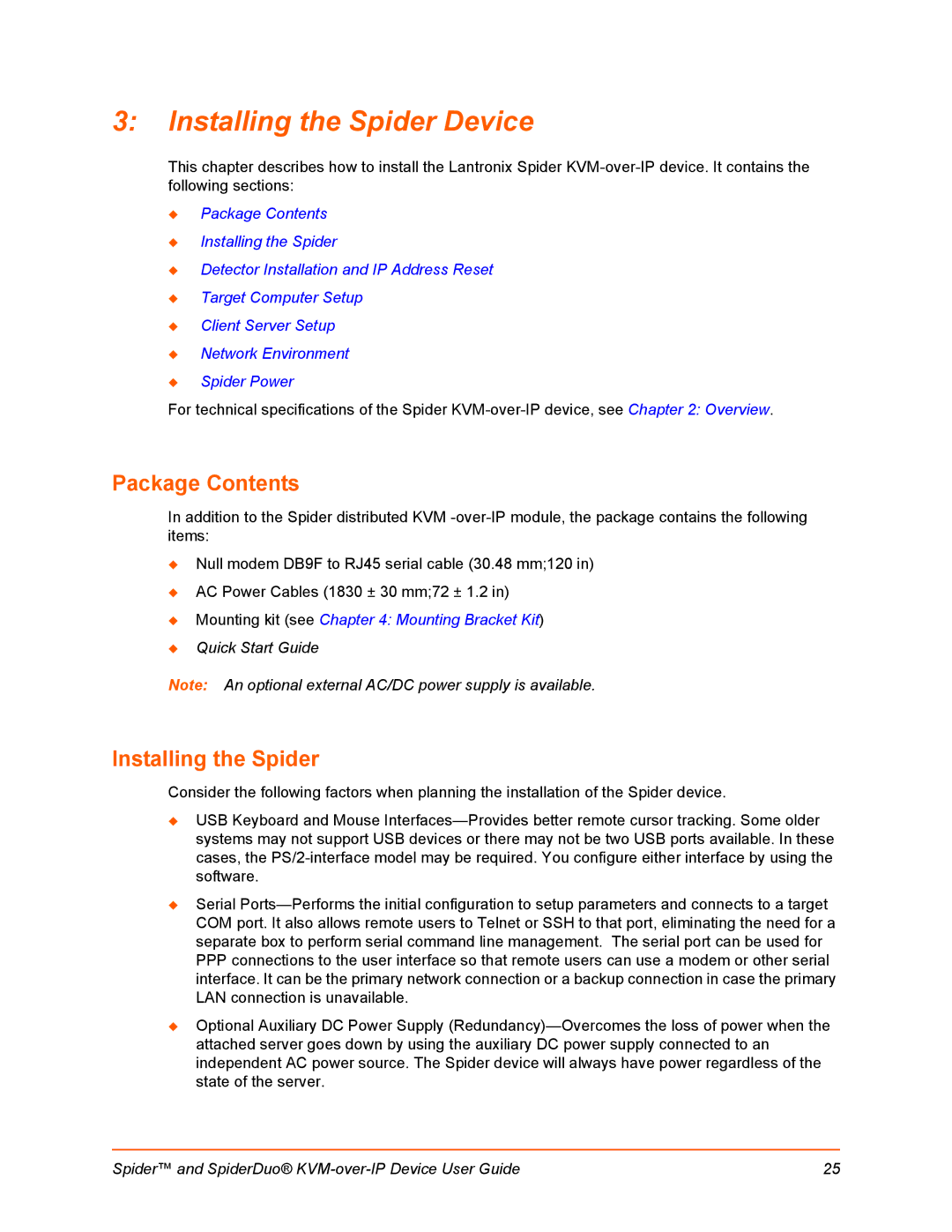3:Installing the Spider Device
This chapter describes how to install the Lantronix Spider KVM-over-IP device. It contains the following sections:
Package Contents
Installing the Spider
Detector Installation and IP Address Reset
Target Computer Setup
Client Server Setup
Network Environment
Spider Power
For technical specifications of the Spider KVM-over-IP device, see Chapter 2: Overview.
Package Contents
In addition to the Spider distributed KVM -over-IP module, the package contains the following items:
Null modem DB9F to RJ45 serial cable (30.48 mm;120 in)
AC Power Cables (1830 ± 30 mm;72 ± 1.2 in)
Mounting kit (see Chapter 4: Mounting Bracket Kit)
Quick Start Guide
Note: An optional external AC/DC power supply is available.
Installing the Spider
Consider the following factors when planning the installation of the Spider device.
USB Keyboard and Mouse Interfaces—Provides better remote cursor tracking. Some older systems may not support USB devices or there may not be two USB ports available. In these cases, the PS/2-interface model may be required. You configure either interface by using the software.
Serial Ports—Performs the initial configuration to setup parameters and connects to a target COM port. It also allows remote users to Telnet or SSH to that port, eliminating the need for a separate box to perform serial command line management. The serial port can be used for PPP connections to the user interface so that remote users can use a modem or other serial interface. It can be the primary network connection or a backup connection in case the primary LAN connection is unavailable.
Optional Auxiliary DC Power Supply (Redundancy)—Overcomes the loss of power when the attached server goes down by using the auxiliary DC power supply connected to an independent AC power source. The Spider device will always have power regardless of the state of the server.
